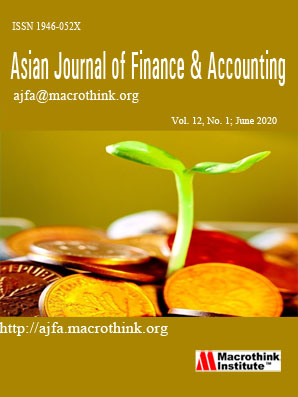Economic Growth and Financial Development Nexus in Malaysia: Dynamic Simultaneous Equations Models
Abstract
This paper estimates the equilibrium and causality relationships among gross domestic product, energy consumption, financial development, foreign direct investment inflows, and gross fixed capital formation. Different econometrics tests like descriptive statistics, ARCH, KPSS unit root, Johansen and Juselius’s co-integration, VECM Granger causality, and ARDL equilibrium relationships have been employed in Malaysia over the (1971−2013) period. The correlation matrix results indicate a linear association among variables. The null hypotheses of Heteroscedasticity and non-stationary have been rejected implying the appropriate use of VECM and ARDL approach. The VECM Granger causality findings show a long-run bidirectional among the variables. The ARDL approach results demonstrate that energy consumption, financial development, foreign direct investment inflows, and gross fixed capital formation augment gross domestic product in long-run. However, the findings of this paper add essential implications to policy makers and scholars in fields of economic, energy, and finance.
Submission of an article implies that the work described has not been published previously (except in the form of an abstract or as part of a published lecture or academic thesis), that it is not under consideration for publication elsewhere, that its publication is approved by all authors and tacitly or explicitly by the responsible authorities where the work was carried out, and that, if accepted, will not be published elsewhere in the same form, in English or in any other language, without the written consent of the Publisher. The Editors reserve the right to edit or otherwise alter all contributions, but authors will receive proofs for approval before publication.
Copyrights for articles published in MTI journals are retained by the authors, with first publication rights granted to the journal. The journal/publisher is not responsible for subsequent uses of the work. It is the author's responsibility to bring an infringement action if so desired by the author.








